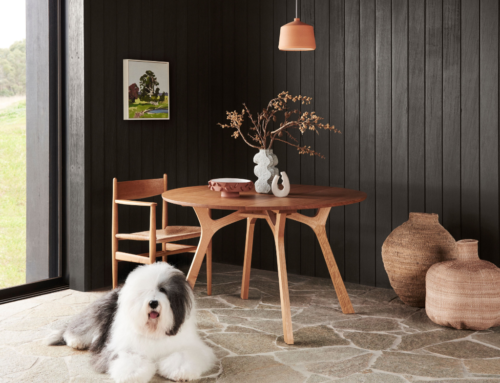Three years ago, I decided I would like to add a pet to our household. I floated the idea to my husband and before I knew it I was down at our local SPCA selecting a cat to take home. Okay, it wasn’t that straight forward. Here’s what our journey to adopting a rescue pet looked like with some tips along the way.

Make sure everyone wants a pet
It’s not enough for just you to want a pet. Everyone living in the same property needs to be keen as well. And if you are renting, it’s a good idea to check with your landlord too before bringing a pet into your home. When I asked my husband what he thought about getting a pet, he had already been thinking about it. That made it an easy conversation. Everyone in the house does need to be on board as pets can take a lot of work, especially in the beginning with training and clean up! They are a big commitment too – cats can live for 15-20 years. A dog’s lifespan is approximately 10-13 years.
Do your research
There’s a lot to think about. What kind of pet are you going to get? Cats and dogs are very different. Of course, there are also other options. Some SPCAs and animal shelters have rabbits, birds, even goats. What type of pet does your lifestyle suit? We looked at our house, the fencing and our work hours and concluded that we could not get a dog – we are not home enough, nor do we have the time or energy to walk a dog every day. We were leaning towards a cat, because in our experience they are a bit more independent and easy care for our situation. How many to get? Sometimes a lone pet gets bored or lonely during the day. You may consider adopting two at the same time so they have an instant companion. Baby or adult? We went with a teenaged cat, as it seemed better suited to our lifestyle. She likes to play, but she is cool with relaxing most of the day away and we haven’t had any toilet accidents either.
In addition to researching the type of pet, you could also do some research on the shelters you are looking at. This will help you make sure you know what requirements they might have, and costs of adoption. You may also be able to see what animals are available before you visit.
Selecting your new furbaby
Take your time at the shelter meeting the animals. Ask questions of the staff. It can be good to understand why the animal is in the shelter. You can also find out if the animal has any special requirements. Some animals are territorial or skittish and that may need a certain type of household. Some animals have allergies to consider.
Coming home
Try to have your house ready for the pet before you bring him or her home. Buy bedding, litter box, toys, leashes, etc. You can keep them in a small room for the first day. I usually use the bathroom because it’s easiest to clean tiles if they are still working out the litter box. Then slowly let them explore the rest of the house. Try to spend time with the animal to help them settle in.
Ask the shelter what food your new pet is used to (what have they been eating), and if they have any bedding or toys at the shelter, ask to bring something with you. This way the animal has familiar tastes and smells from their previous shelter in their new house. This should help them adjust to the other changes.
Imagine your new pet is like a toddler and move anything fragile out of the way while they are getting use to their new pad. Make sure your houseplants aren’t poisonous to animals as well!
Patience
If possible, confine your new pet to your house for a few days to allow them to explore and adjust. If you have adopted a kitten or a puppy, then you’ll want to give them a lot of affection. Try to hold them as much as possible, and play with them on the ground. This allows them to get use to being held, and with you being on the ground with them it will put your scent at their level too. You do need to make sure they also have a chill out space so they can have alone time. With an adult cat, it’s best to let them set the pace for affection. Our first night with our cat, she took ages to come and sit on the couch and would not come near us. By the second evening she was choosing to sit on us. By the third evening she was absolutely glued to us, which lasted for a few weeks until she relaxed into being home.
For a dog, try to commit to spending quality time every day for play, walks and get them into some training as quickly as possible. You can ask the shelter what the dog’s routine was for exercise, and try to stick to this as much as you can to help ease them into their new life.
Pet insurance and vets
Lastly, I just wanted to touch on vets and pet insurance. Regular check ups at a vet are important. Our cat goes yearly and even though she hates it, it’s important to me that we monitor her health and act on any concerns as quickly as possible. We also have pet insurance, with dental care cover as well. This costs us approximately $35 a month, and gives me peace of mind. If anything happens and she needs urgent care, I don’t have to worry about the sudden cost.

Have you adopted a rescue pet? Share your experiences!
See more:
 Written by Kym Moore
Written by Kym Moore
When she isn’t herding cats, Kym loves to drink craft beer, or share a whine and a wine with friends. She is also partial to a well-made cocktail. Her happy places include sitting on couch watching British Comedy and daydreaming. Lots of daydreaming.
Favourite artist: Bowie






Leave A Comment
You must be logged in to post a comment.